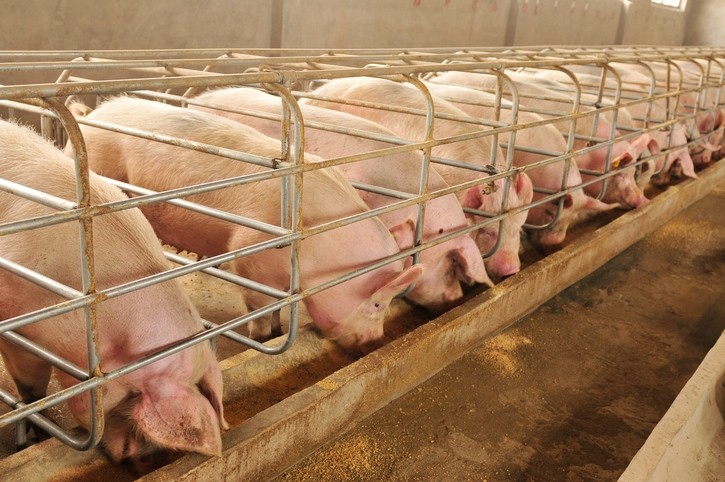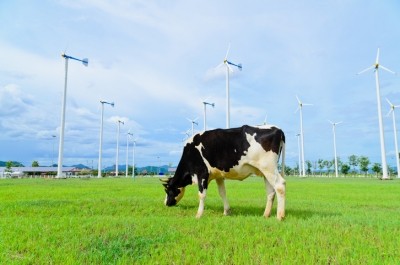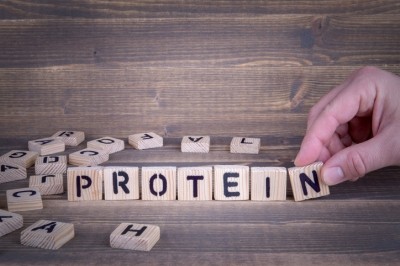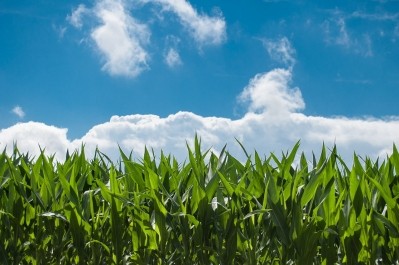Special Edition: Lowering the carbon footprint of feed
Feed optimization to improve nitrogen use can reduce ammonia emissions: Defra

Ammonia (NH3) emission from farmed animal production has received increased attention from the scientific world and regulatory agencies for its potential negative impacts on the environment, ecosystem, and human and animal health.
The UK government has agreed to reduce ammonia emissions by 8% in 2020 and 16% in 2030, compared to 2005 levels; Defra notes that around 88% of ammonia emissions in the UK come from agriculture.
Its new manual, which was written by the Department of Environment, Food and Rural Affairs (Defra) in collaboration with the NFU, AHDB and feed indsutry representative body, Agricultural Industries Confederation (AIC), among others, outlines how diet selection and management as well as improved feed efficiency can minimize ammonia emissions.
In relation to pig feeding, the publication suggests the following:
- Improve feed conversion to weight gain and reduce feed surplus by adopting high standards of management and welfare and monitoring feed and water intake and growth rate
- Match the nutrient requirements at all stages of production to improve the precision of nutrient supply. Consider options such as multi-phase and single-sex feeding as ways of improving the precision of nutrient supply, thus reducing waste and emissions.
- Pig nutritionists can help to regularly review diets and adjust least-cost formulations to meet nutrient requirements. Consider professionally formulated diets, containing synthetic amino acids, enzymes and other feed additives to help reduce nutrient excreted. For example, evidence suggests that a decrease of 1% in dietary crude protein in the diet of finishing pigs results in a 10% reduction in total ammoniacal nitrogen (TAN) content of the pig slurry and 10% lower ammonia emissions.
The Defra guide also indicates the relevant dietary management measures to be taken by the beef, dairy and poultry sectors.
Excessive intake of amino acids
Purdue University researchers, writing in Bioresource Technology last year noted that about 70% of the N in the pig diet could be excreted in urine and feces, a potential N source of eutrophication in water body if not managed appropriately, and that 31% N in the urine and feces could be lost as NH3 emissions during house storage and land application.
They said the standard diet of pigs is formulated to meet the demand of lysine, resulting in excessive intake of other amino acids (AA) by pigs. By increasing the utilization efficiency of dietary N and decreasing N in the excreta, there is potential to reduce NH3 emissions, they said. And if the amount of CP in the diet is reduced by using synthetic AA, there will be significantly less N excreted by the pigs (Radcliffe et al., 2005), they argued.
They noted that some studies have been conducted to investigate the effects of feeding pigs with CP-reduced diet on NH3 emissions from pig production. However, they said previous work has not fully revealed the effects of CP reduction on NH3 emissions during different pig growth stages from weaned to finishing. Most of the field studies were of short-term experiments without covering the sufficiently long growth cycle of pigs.
Trial looking at lower CP in pig diets
The objective of a study they carried out then was to uncover the effects of reduced dietary CP with AA supplementation on NH3 emissions from a swine environmental research building with 720 pigs, covering nursery to finishing stages.
The pigs were divided into three 4-room groups and fed with 2.1–3.8% reduced CP (T1), 4.4–7.8% reduced CP (T2), and standard (control) diets, respectively.
The Purdue team found that, compared with the control group, T1 and T2 decreased manure volumes and manure NH4+-N concentrations. Group-mean NH3 emission from the control group was 68.9 g d−1 AU−1 (AU = 500 kg live mass). Emissions from T1 (46.7 g d−1 AU−1) and T2 (29.8 g d−1 AU−1) were reduced by 33.0% and 57.2% (p < 0.05), respectively.
They said dynamic peak NH3 emissions appeared during the third nursery phase for T1 and T2, but delayed to the first grower phase for the control group.
Source: Bioresource Technology
Published online ahead of print: https://doi.org/10.1016/j.biortech.2017.02.082
Title: Mitigation of ammonia emissions from pig production using reduced dietary crude protein with amino acid supplementation
Authors: S. Liu, J Q Ni, J S Radcliffe, C E Vonderohe












